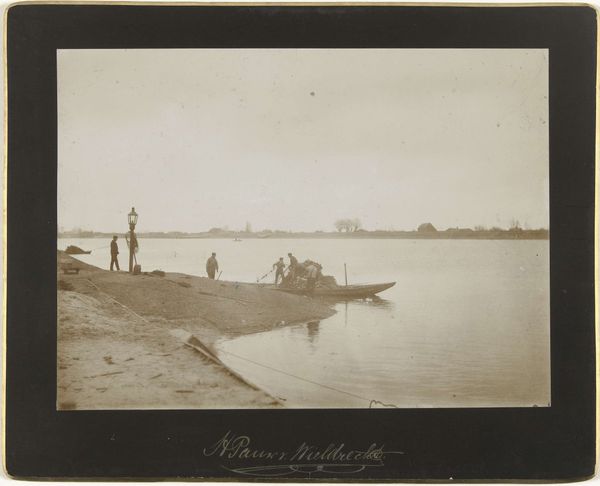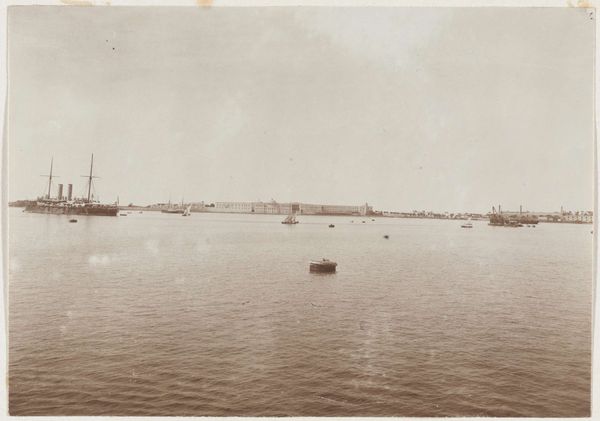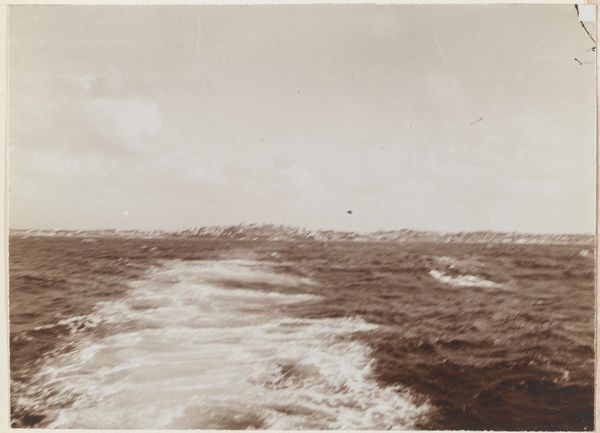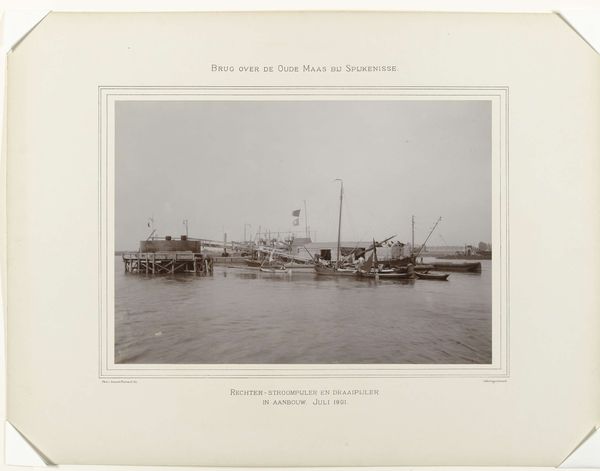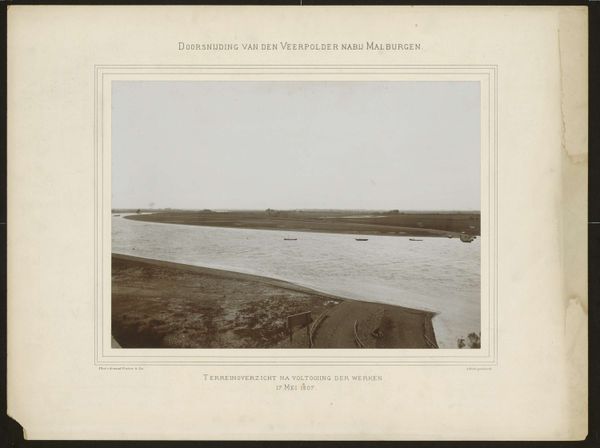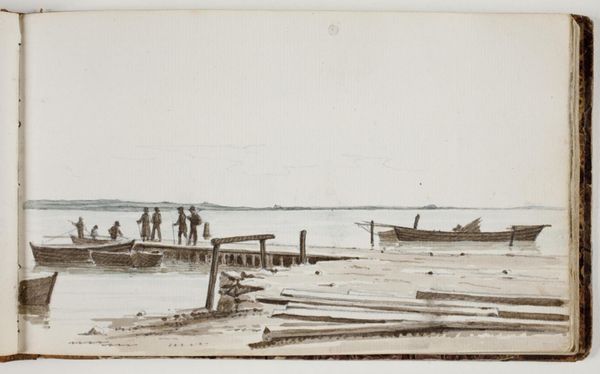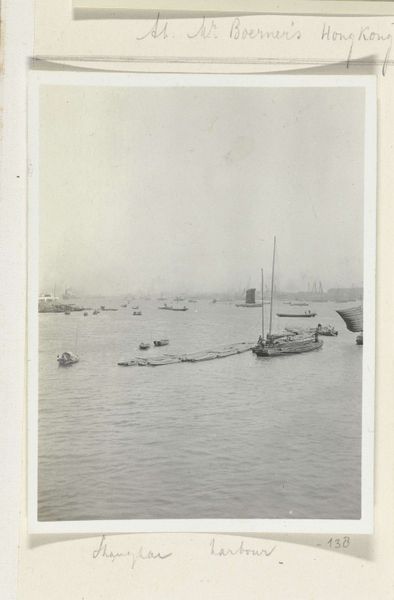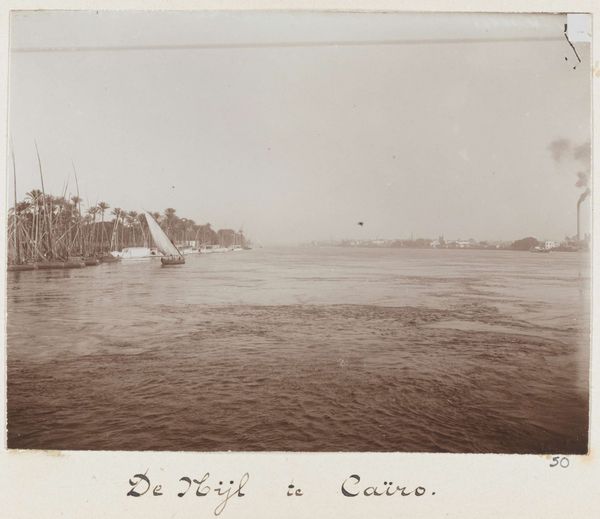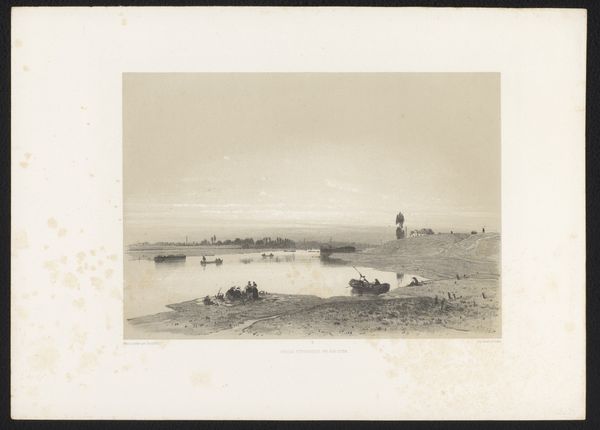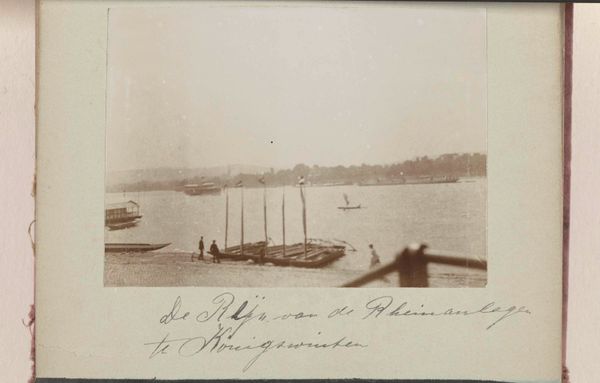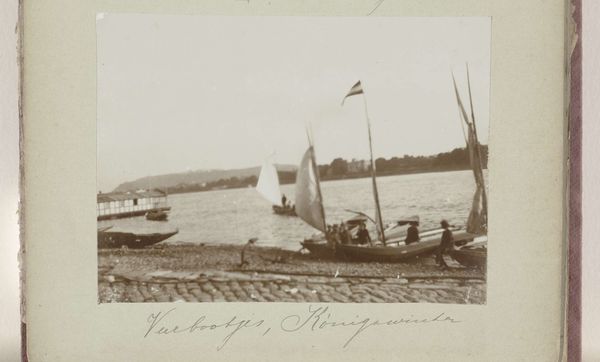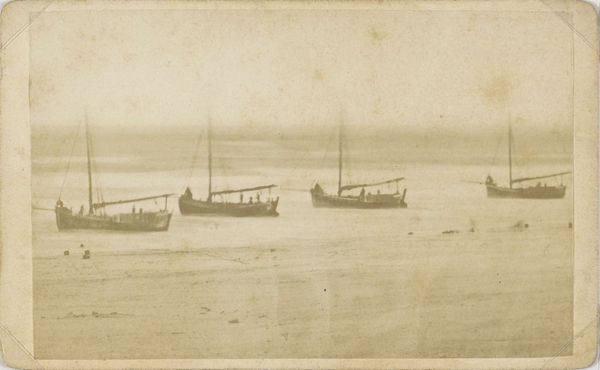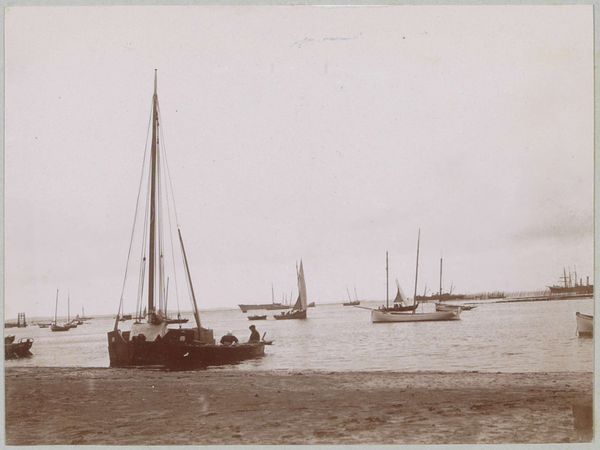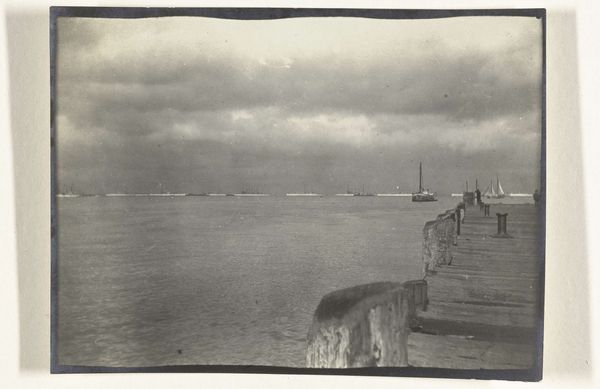
photography, gelatin-silver-print
#
landscape
#
photography
#
gelatin-silver-print
#
watercolor
#
realism
Dimensions: height 80 mm, width 109 mm
Copyright: Rijks Museum: Open Domain
Editor: This photograph, "Standing Buffalo in the Flooded Nile Valley near Cairo," was taken in 1898 by Johannes Lodewijk Heldring, using the gelatin silver process. It's striking how much space is given to the water and sky; the buffalo seems almost stranded, a small dark shape in all that grey. What do you see in this piece? Curator: That solitary buffalo carries immense weight, doesn't it? Heldring’s image, to me, speaks to a time and place deeply connected to cycles of flooding and renewal, life and death. The buffalo becomes a potent symbol here, burdened, perhaps, by its isolation. It makes me wonder, is it a symbol of resilience, or vulnerability, standing amidst forces beyond its control? What resonates most with you about the animal’s presence? Editor: I think it's vulnerability, definitely. It seems so small against the landscape. Does the image have anything to say about Dutch colonialism in Egypt? Curator: It absolutely can. While seemingly a simple landscape, photography during the colonial era was often used as a tool for documentation and control. The vastness of the landscape can be interpreted as a claim of space, with the animal rendered subservient to the land—and, by extension, the viewer, or colonial power. How might local Egyptian communities have viewed this very scene? Editor: That’s a really important question, and one I hadn't considered! So, it’s not just a picture of a buffalo, but a layered representation of power and perception. Curator: Precisely! Seeing isn't always believing; it is often a question of who is seeing, and from where. This image, on closer inspection, reminds us of the cultural narratives we often overlook at first glance.
Comments
No comments
Be the first to comment and join the conversation on the ultimate creative platform.
